Gooseberries are a fairly unpretentious plant that does not require diligent care and a lot of attention. Its landing, as a rule, falls in the autumn months. For this process to succeed, you need to choose the right “planting material” and a suitable place for planting, prepare the soil, and also conduct the planting, taking into account all the rules for its implementation.
Content
Gooseberry planting dates in autumn
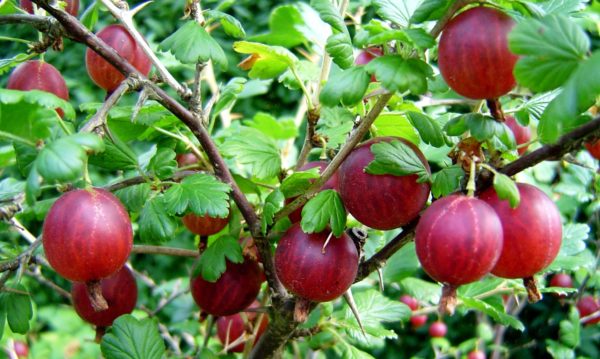
The most favorable time for planting gooseberries in the soil is the end of September and mid-October. Daytime soil temperature indicators should be kept at + 10-12 ° С, and nighttime ones should not fall below + 5 ° С. Before the onset of negative temperatures, at least three weeks should pass.
Landing in different regions
Gooseberry planting dates also depend on the region in which it will be grown:
| Region | Landing time |
| Volga region | October 1-20 |
| Midland and Moscow Region | The end of September-mid-October |
| Siberia and the Urals | September 1-15 |
According to the lunar calendar 2018
Suitable days for planting gooseberries according to the lunar calendar 2018:
| Month | Days |
| September | 1-2, 4-7, 13-20, 27-29 |
| October | 4-7, 12-13 |
Advantages and disadvantages of planting gooseberries in autumn
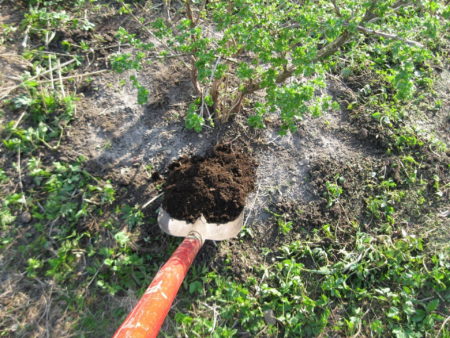
Planting a plant in the fall in most cases gives a positive result, which cannot be said about spring. Advantages of planting gooseberries in the fall:
- A wide range of "planting material", which is represented by gardeners and nurseries.
- More time to prepare the pit for landing. Due to the density of the earth, it is difficult to dig it in the spring.
- By autumn, the sapling is immersed in a state of rest, therefore, after planting, it will only grow the root system. With the onset of spring, the buds wake up early enough and if the plant is planted too late, it will begin to intensively develop the aerial part with a small root size. This will lead to prolonged illness or death of the plant.
- In the fall, a large amount of precipitation falls, which frees up from additional watering.
- In winter, the soil becomes denser and all holes are filled. In spring, it is difficult to fill all the voids in the ground.
However, the autumn landing of gooseberries has its drawbacks:
- Rain season. Due to excessive moisture, undeveloped roots can rot and the plant will die.
- Early cold. If the seedling does not have time to adapt and grow roots before freezing temperatures, it will freeze.
Planting a sapling in the ground
The whole process of planting gooseberries in open ground consists of several main stages:
Sapling selection and preparation
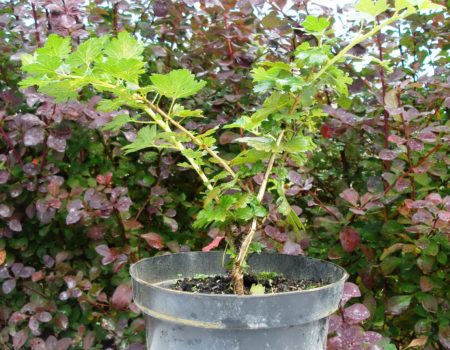
We choose a two-year bush, because it has already formed the necessary root mass and will grow actively. Sapling should not actively vegetate, that is, young shoots with leaves should not grow on it. On stiff processes, buds should be formed, and the leaves should be completely absent. We select saplings with shoots about 40 cm long, as well as roots consisting of three or more skeletal roots, at least 15 cm long and a large number of fibrous roots.
We prepare the seedling for planting as follows:
- Trim dry roots.
- Lower the seedling into the clay mash. We prepare a solution with clay (1 kg), peat (1 kg), root (2 pack) and water (3 l).
- If, when buying, the choice nevertheless fell on a sapling with leaves - before planting, remove them.
Seat selection
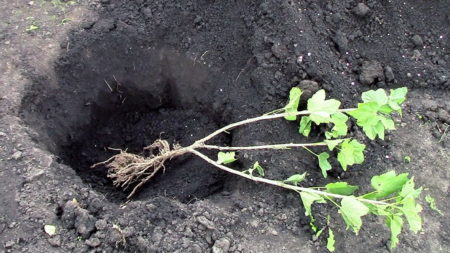
Gooseberries prefer a sunny area without strong gusty winds. The soil must pass moisture well, otherwise its stagnation will lead to the death of the bush.
We adhere to the distance between the bushes at a level of not less than 1.2 m. We also move them away from the trees by 2 m.
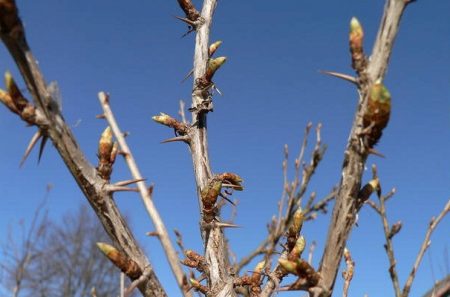 You may be interested in:
You may be interested in:Preparing a garden for planting
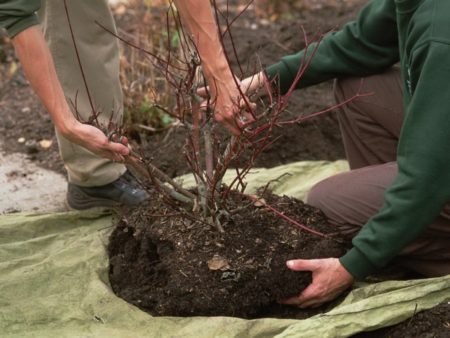
Gooseberries cannot germinate in swampy areas, and also does not tolerate acidic soil. Every year we enrich the sandy soil with organic matter, and loamy soil is constantly loosened at the base of the roots to provide them with full oxygen access.
We prepare the garden plot three weeks before planting the bushes. This will enable the earth to settle. Carefully plow the soil to the length of the shovel to the steps and remove all the roots of weeds.
Depth of Landing Pit
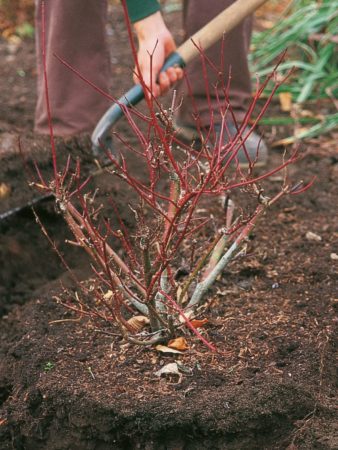
We prepare a pit for planting, taking into account the size of the root mass of the bush. Typically, it is about 40 cm wide and about 70 cm long.
Digging a hole, we remove the upper layer of soil to the side in order to use it in the process of preparing the planting mixture, since it is more fertile than the lower one.
Nutrient Preparation
After the hole is dug, fill it with 2/3 of the nutrient mixture:
- compost or humus - 1 part;
- double phosphate - 50 g;
- sulfuric potassium - 40 g;
- topsoil - 2 parts.
When using heavy loamy soil for planting, add river sand (1 part).
We fill the hole with the mixture in advance, for 1-2 weeks, so that it has time to settle.
Landing
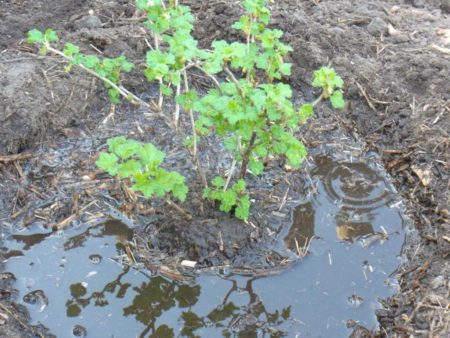
The planting of a sapling on a garden plot itself is carried out in several stages:
- We examine the root system of the plant. We remove with the secateurs those parts that are damaged, and also cut off to the healthy part those areas that are dry or broken.
- We water the pit for planting - 5 l / 1 pit, wait until the water is completely absorbed.
- We place the seedlings in the pit in an upright position, deepening the root neck by 4 cm. This will allow him to throw the shoots out of the ground and increase the volume of the aerial part.
- We straighten the roots, slowly sprinkle them with the upper layer of soil, periodically shaking the bush so that there are no voids in the soil. From above, we compact the earth with our feet.
- Water it with water - 5 l / plant.
- We leave shoots with a height of not more than 20 cm, with four formed buds.
Rules for further care
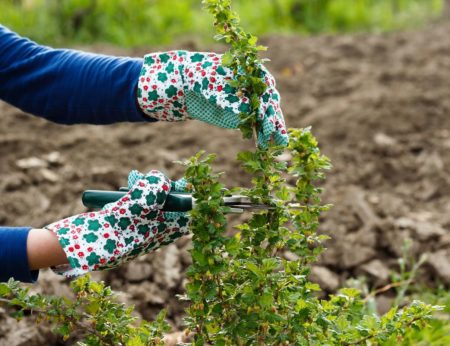
As a rule, additional watering in autumn is not required. However, if the autumn turned out to be dry, we water the plant every four days with water, which was previously settled. The required volume is 5 l / plant.
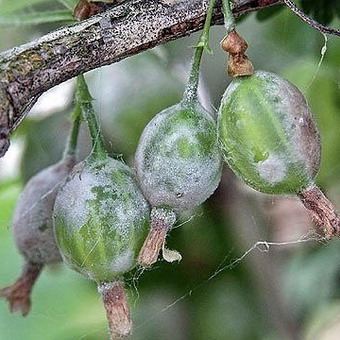 You may be interested in:
You may be interested in:10 days after planting, we treat the plant with a Bordeaux mixture and nitrafen to protect it from fungal diseases and possible pests. We use drugs according to the instructions.
Common mistakes
When planting gooseberries in the soil, it is important not to make the following mistakes:
- Features of the variety and the conditions for its cultivation are not taken into account. When choosing a variety, we pay attention to the tolerance of negative temperatures by the plant.
- Purchase seedlings in advance.We buy "planting material" immediately before planting, so that the roots of the plant do not dry out.
- Planting a plant immediately after preparing a planting pit. After the pit is dug and filled with a fertile mixture, time must pass before the soil settles and the voids fill up. Otherwise, there is a high probability of incorrect penetration of the seedling and its freezing.
- Excess mineral fertilizers in the ground. This leads to inadequate assimilation of nutrient components by the plant and the inability to increase the desired root mass.
How else can you breed gooseberries
For planting and breeding plants, you can take not only seedlings. Additionally, cuttings and cuttings are used for the reproduction of gooseberries.
Layering
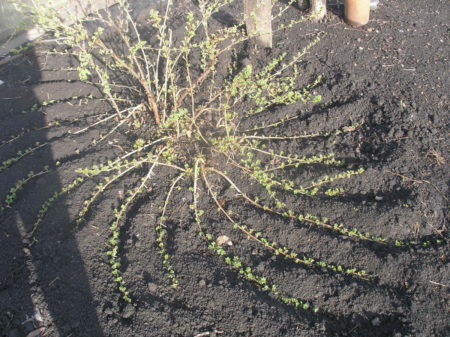
The use of layering is a good option for growing your seedlings for further planting in the ground. For it, 3-4 summer plants are used, and as a result, 9-10 good layering is obtained.
We form layering in several stages:
- We choose annual side branches and lay them in furrows, with a height of 10 cm.
- We fix them with wooden studs so that the branches are located on the ground, since they do not drip on top. We pinch the upper parts of the branches by 2-3 cm.
- After the buds release branches of 5 cm in length, sprinkle layering a little with the ground.
- When the shoots grew another 15 cm, we cultivate them with moist soil up to the tops. We continue hilling in the process of plant growth.
In the fall, we separate the layering and transplant to the prepared place.
Cuttings
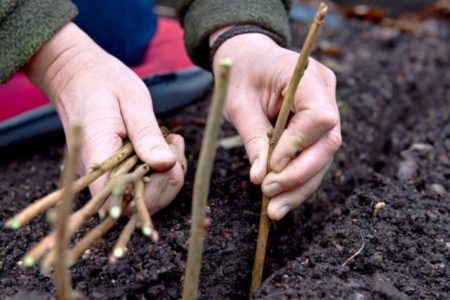
Choosing the cuttings as a method of cultivating shrubs, we take into account that this procedure should be carried out in early July. We carry it out in several stages:
- In the morning we harvest twigs about 19 cm long; they should have 8 knots.
- For 8 hours, immerse the cuttings in a solution that stimulates the formation of roots.
- We mix peat with sand and deepen the cuttings 3 cm into this soil. Next, slightly moisten the soil.
With the advent of the season, we transplant cuttings into the open ground, and in the fall already transplant to a prepared place.
Landing gooseberries in the soil is a responsible process that requires compliance with all the rules. Stick to them, as well as our recommendations and your plants will be able to build up the necessary root system and successfully winter.

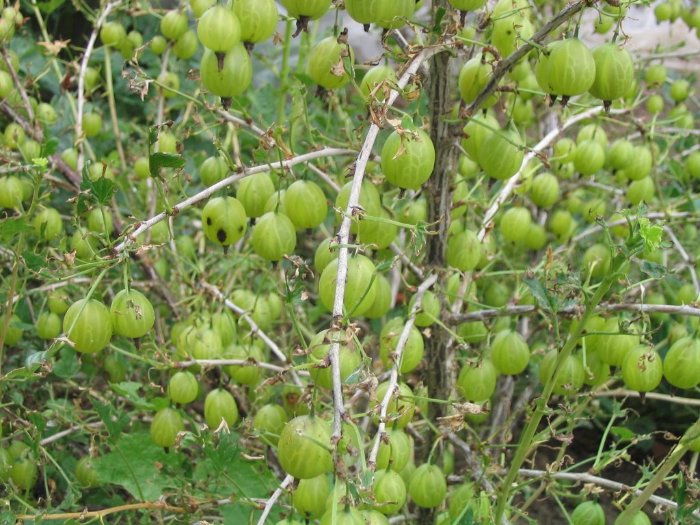 What if gooseberries have eaten all the leaves? Simple tools come to the rescue
What if gooseberries have eaten all the leaves? Simple tools come to the rescue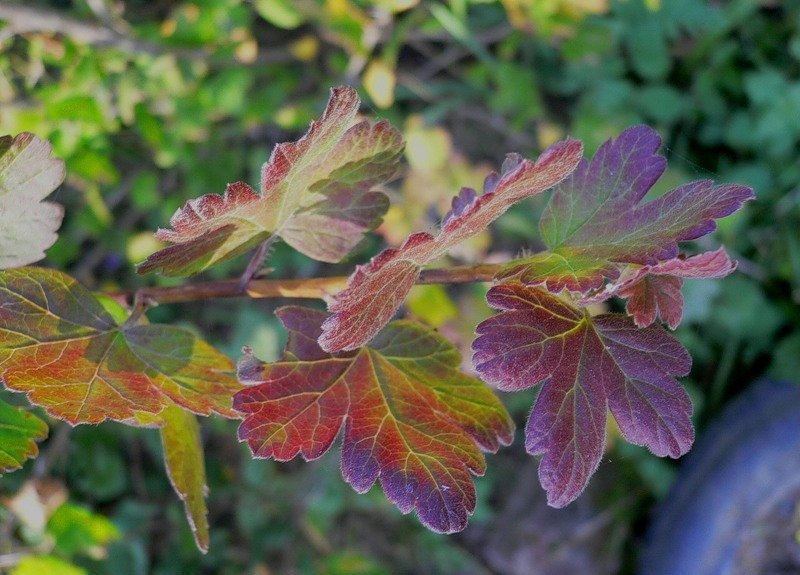 What does the red border on gooseberry leaves mean and what needs to be done
What does the red border on gooseberry leaves mean and what needs to be done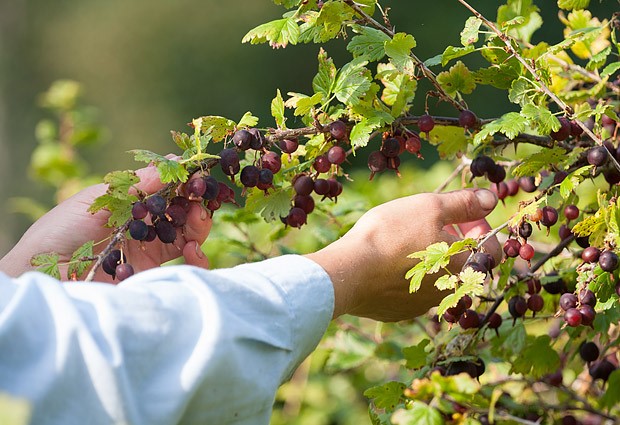 That's the end of summer, it's time to feed gooseberries after harvest
That's the end of summer, it's time to feed gooseberries after harvest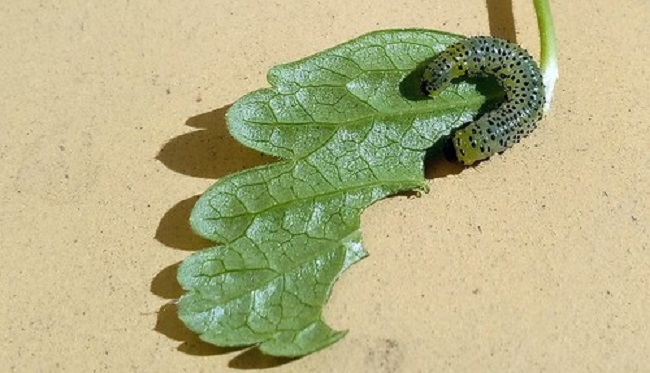 To save gooseberries from the invasion of caterpillars will help vinegar, mustard and ammonia
To save gooseberries from the invasion of caterpillars will help vinegar, mustard and ammonia